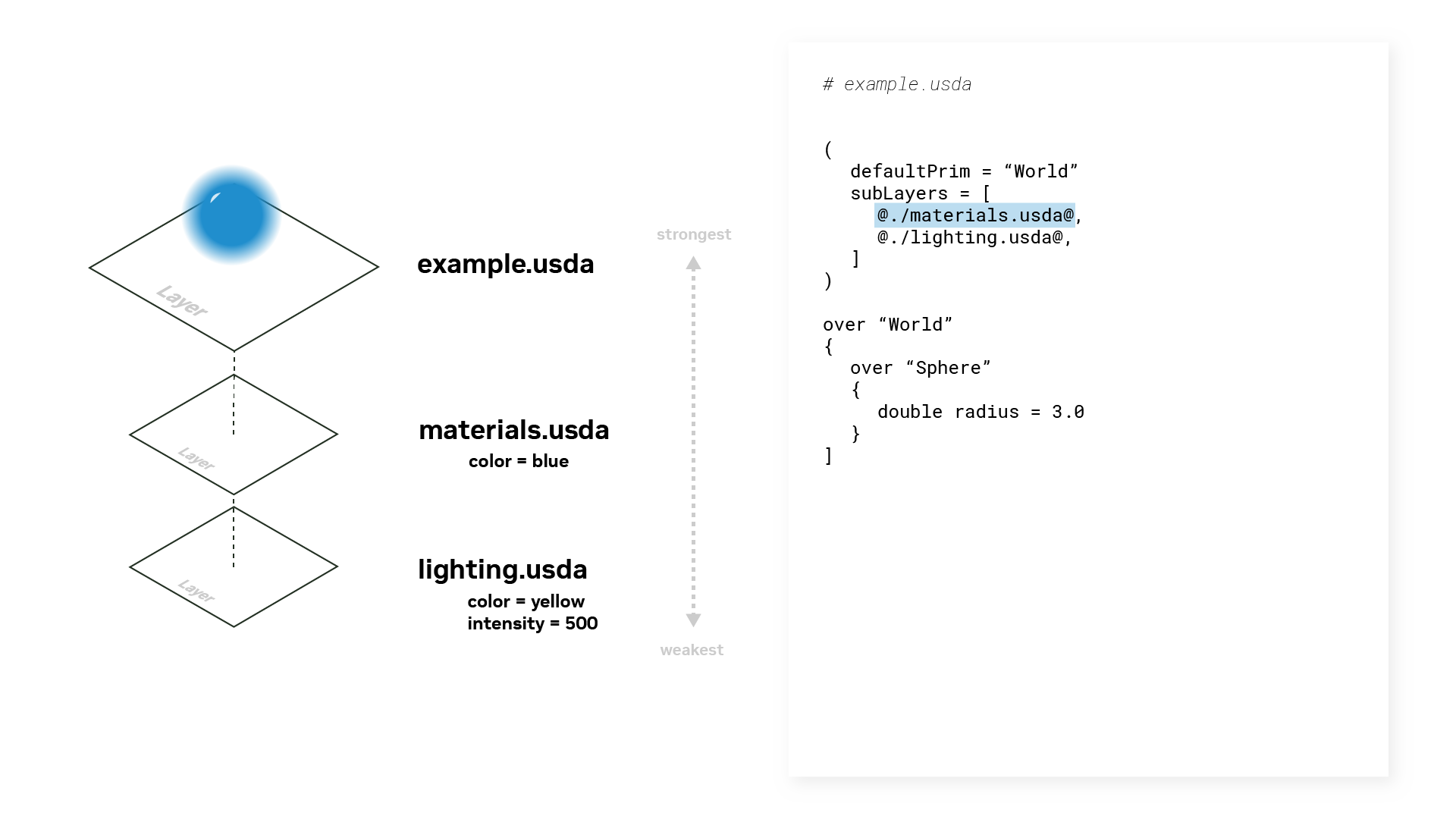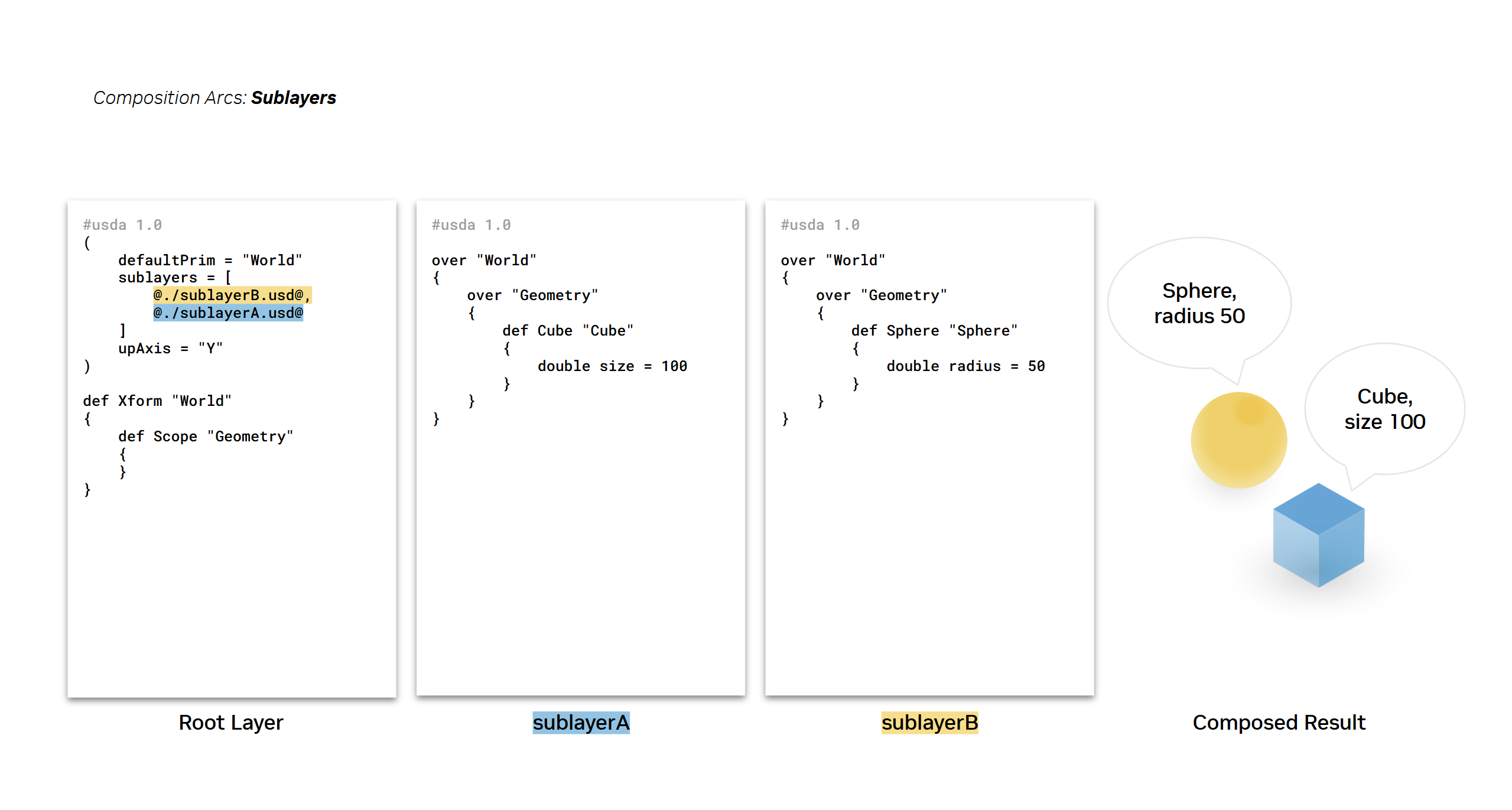Sublayers#

What Are Sublayers?#
Sublayers are a list of USD layers that are ordered by opinion strength (i.e. the first layer is stronger than the last layer). Each layer overlays on top of each other and provides opinions (specs). When a layer is composed as a sublayer, all of its contents are added to the destination layer in an “include” fashion without any remapping.
When and Why Do You Use Them?#
When working with large scenes, being able to have each workstream work in their own smaller, manageable sublayers makes it easier to work in the scene. For example, one workstream could be working on lighting while another workstream works on asset layout. These sublayers are independent but can be composed together. That way, as new assets are added in one workstream, the lighting workstream does not have to change. Each workstream can also work independently without blocking each other.

Starting from left to right, we have our root layer that contains two sublayers: sublayerB and sublayerA. Our root layer also contains an Xform called World with a scope called Geometry.
In sublayerA, we also have World and Geometry. Under Geometry, we have defined a Cube of size 100. In sublayerB, the setup is similar to sublayerA, except under Geometry we defined a Sphere of radius 50. On the far right, we see the composed result. This composed result shows both a sphere and a cube.

Now let’s add a differing opinion for the size of the Cube in sublayerB, shown in green in the image.
If we look back at our root layer on the far left, we see that sublayerB comes before sublayerA, meaning the authored opinions in sublayerB will outweigh sublayerA’s opinions. This is why in the composed result sublayerB’s opinion for the cube’s size of 50 was used instead of size 100 from sublayerA.